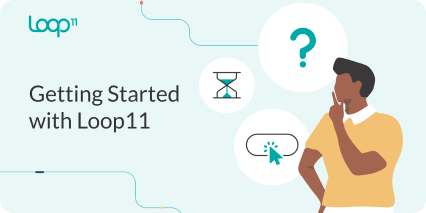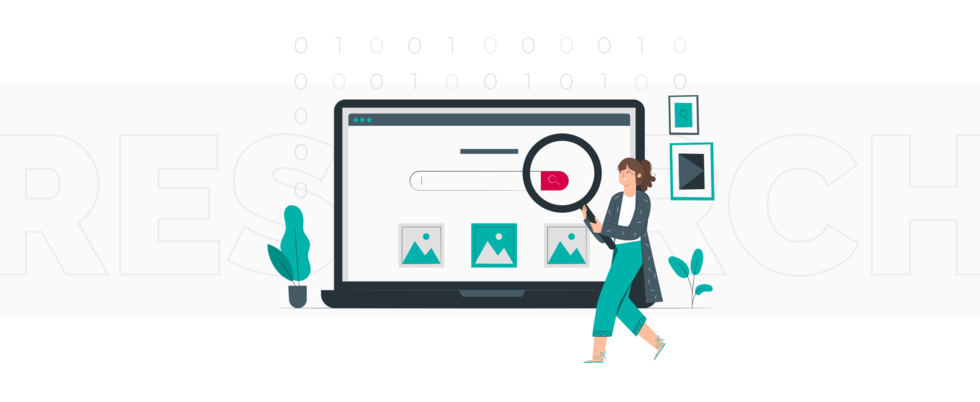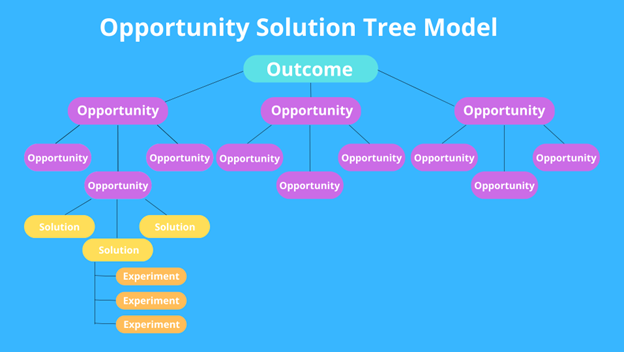Introduction
Delivering a customer-centric experience and increased conversion rates is what every small, medium and large-sized business strives hard for. Software testing is pretty important in comparison to software development, no two ways about it! Now software testing in general is a pretty wide concept so we won’t be able to cover all its pits and bits, however as of now you will get to learn about Usability testing and A/B testing, what are they, how are they beneficial and which one is a better option here. So without any delay, let us get started with both concepts.
Usability testing
As the name implies, this type of testing is done to see how the end user interacts with the app, how they respond to the product and more. In technical terms, usability testing emphasizes more on evaluation of user experience as well as navigating seamlessly across the entire website, app and all kinds of digital products. Mainly done from the end-user’s perspective, this kind of software testing is done to determine whether the system can be easily used or not. Tons of tests are performed on a product before deploying it. What all is required includes the collection of qualitative and quantitative data to successfully satisfy customer needs and see whether the product is worth their time or not. In the end, the final report is made after observing how real users interact with it.
The ultimate purpose of user testing is to uncover all the pain points in the user experience and find out whether there is scope for improvement or not.
Types of Usability Testing
Remote Usability Testing – Here all the participants tend to use a product or website from their own location so here what researchers are supposed to do is observe as well as gather feedback remotely. Here testing is done keeping a diverse range of users in mind and there is no need for any geographical constraints.
Moderate Usability Testing – The next type of testing is moderate usability testing. Here participants are guided via a different bunch of tasks, and the researcher is supposed to observe their interaction and collect feedback in real-time.
Unmoderated Usability Testing – The next type of usability testing is unmoderated usability testing. Here the participants are asked to complete tasks independently and without any guidance from the researcher. Here the screen is recorded and thoughts can be verbalized while interacting with the product.
Comparative Usability Testing – This type of usability testing features multiple versions and it is observed what performs at its best when it comes to usability. Here it is highly possible to make well-informed decisions just by identifying the strengths and weaknesses of each version.
A/B Testing – The next type of usability testing is A/B testing. Here it is all about presenting users with two or more versions of the product or interface and measuring which performs better especially based on conversion rates and user engagement.
How is usability Testing beneficial?
Usability testing offers many benefits and advantages, a few of which I would like to emphasise.
1. Real user behavior
The first and foremost benefit to consider includes real-user behaviour. Usability testing assures direct observational data, especially the way the representative interacts with the product or service. Since the real audience is involved in completing realistic tasks, concrete insights on actual user behaviours, points of confusion, and other relevant pain points can be gained.
There are times when shortcomings and opportunities are often missed due to their biased perspectives. As a result, convoluted workflows and misinterpreted poor messaging hints can cause a ruckus, especially in finding out how these products can be used in the real world.
2. Uncovers subjective user perspective
The next benefit offered by usability testing includes observing and communicating with real users. Here you will figure out how much the end user is satisfied or what could be the ease of use.
What was their candid feedback, have you marked their emotional reaction, comments and in the end did they face any difficulty in creating a qualitative window into the user experience? The objective to survive beyond assumptions. Here subjective insights qualify user experience metrics far more meaningfully than superficial surveys or generic feedback.
3. Data-driven design iterations
Do you think there is a benefit to watching real-usage metrics? Of course, there is, in fact, here you are bound to receive a concrete direction for design improvements which are highly grounded in actual user interactions instead of any kind of internal guesses.
Time to Meet A/B Testing
Often called split testing or bucket testing, A/B testing is all about comparing two versions of content just to see which one appeals more to visitors as well as viewers. The concept assists in offering the best customer experience like never before. By following the method, easy, quick and accurate decisions can be made based on real data instead of guessing. Here you get to learn what customers prefer. First and foremost you need to understand why one needs to consider A/B testing.
Solve pain points – Visitors tend to visit your website to achieve a specific goal in mind. Now this can differ from having to understand more of your product and services or buying a specific product, learning about a specific topic and simply browsing. These are some of the most common yet crucial pain points faced by the end user which must be considered right away. Not addressing these can certainly lead to a bad user experience and reduce conversion rates eventually.
Get better ROI – The next reason to consider A/B testing is getting better ROI. A/B testing results in getting the most of your existing traffic and increases conversions without spending an extra amount on acquiring new traffic. In fact, it has been proven that even a minute change made on your website can lead to a significant increase in overall conversion of business.
Reduce bounce rate – The next reason is reduced bounce rate. Almost all kinds of website’s performance is judged based on their bounce rate and that’s the reason why businesses are afraid of high bounce rates. Now here there is no one-size-fits-all scene, however, with A/B testing things can work wonders like never before. In the end, it won’t assist in making visitors spend more time but also convert paying customers.
Low-risk modification – As mentioned earlier, making minor changes to your existing webpage with A/B testing instead of redesigning the entire page can reduce the risk of jeopardizing your current conversion rate.
A/B testing enables maximum output with minimal modifications leading to increased ROI. A/B testing must be considered to analyze their reaction as well as ascertain which side weighs more.
Another example of low-risk modifications is introducing new features, changes can make the outcome more certain and beneficial.
Redesign to increase traffic – Did you know by redesigning it is possible to increase traffic? Whether you are changing minor CTA text or colour tweaks to specific web pages or even opting for entirely revamping the website, every move can definitely get you a step ahead towards increased traffic and high conversion rates. In the end, by conducting A/B testing you are supposed to showcase the most engaging version to the visitors.
Types of A/B Testing
- Split Testing – This is an experimental process where a new version of the existing web page URL is tested to analyze which one performs better. This type of testing is conducted to make significant changes to your existing page, especially in regard to the design. If you have dynamic content then this method is worth considering.
- Multivariate Testing – Another experimental method where multiple-page variables are tested to analyze which combination performs the best out of all possible permutations. This one is a bit more complicated in comparison to regular A/B testing and is advisable for advanced marketing.
- A/A testing – Here you need to test two identical versions of an element and the traffic is divided among the two as well. So what happens here is you can determine whether the conversion rates within each group are similar or not. Also, this method of A/B testing is the best way to identify bugs and outliers raising the bar to the next level.
- Feature Testing – As the name implies, this type involves building multiple feature versions in the codebase. Feature testing is the best middle-ground for implementing both client-side tests and server-side tests.
How is A/B testing beneficial?
1. Enhanced Content
The first and foremost benefit of A/B testing is enhanced content. All you need to do is simply develop, and analyze enhancing the unproductive language and leading to more focused outcomes.
2. Lowered costs
Lots and lots of money can be saved by considering A/B testing. Now saving money doesn’t mean better results aren’t produced. By comparing the two scenarios, it is easy to eliminate the one which provides lower returns and invest money in the one which pays more.
3. Low risks
The next benefit of considering A/B testing includes lower risk. It is possible to observe in case of a new update or component on your product which affects the system and how users successfully respond especially if you are unsure of how things will perform.
4. Increased Engagement
Highly engaged customers and followers are what every business seeks hard for. With A/B testing, another crucial advantage which can be achieved is increased engagement.
5. Optimized productivity
The next crucial advantage of considering A/B testing is well-optimized productivity and budgets. Also, you will learn more about what works for every audience segment.
Conclusion
Both usability testing and A/B testing are worth taking into account. In fact, it may quite interest you to know that both are similar in many ways such as both offer enhanced user experiences, represent target audiences, guide in making design-based decisions with the help of relevant user data and assist in crafting strong test hypotheses and so more. Both concepts are worth considering, only you need to know which one to consider when.
When to use usability testing?
- Early-stage concepts or prototypes
- Require qualitative user insights
- Identifying specific user issues
- Understanding why users struggle
- Evaluating all kinds of new features
- Capturing subtle behavioural cues
When to use A/B Testing?
- Optimize high-traffic sites or apps
- Need significant quantitative data
- Sufficient traffic volume for sample sizes
- Direct user feedback
- Testing focused page elements
So what you need to do is make the right choice there are a few steps which you need to consider when choosing between user testing and A/B testing such as:
- Consider the product or site maturity stage
- Evaluate the type of data and insights
- Check on audit available resources and constraints
- Gaude traffic volumes and audience sizes
- Align testing goals seamlessly
And this is it for now. I hope you are well versed with both the topics – usability testing and A/B testing, in case you have any doubts or issues feel free to reach us out in the comment section below.
- User Testing vs A/B Testing. Which Should You Choose? - April 7, 2025
- A Beginner’s Guide To Information Architecture in UX - December 3, 2024
- Moderated Testing: Definition, Process, and Best Practices - October 1, 2024
![]() Give feedback about this article
Give feedback about this article
Were sorry to hear about that, give us a chance to improve.








